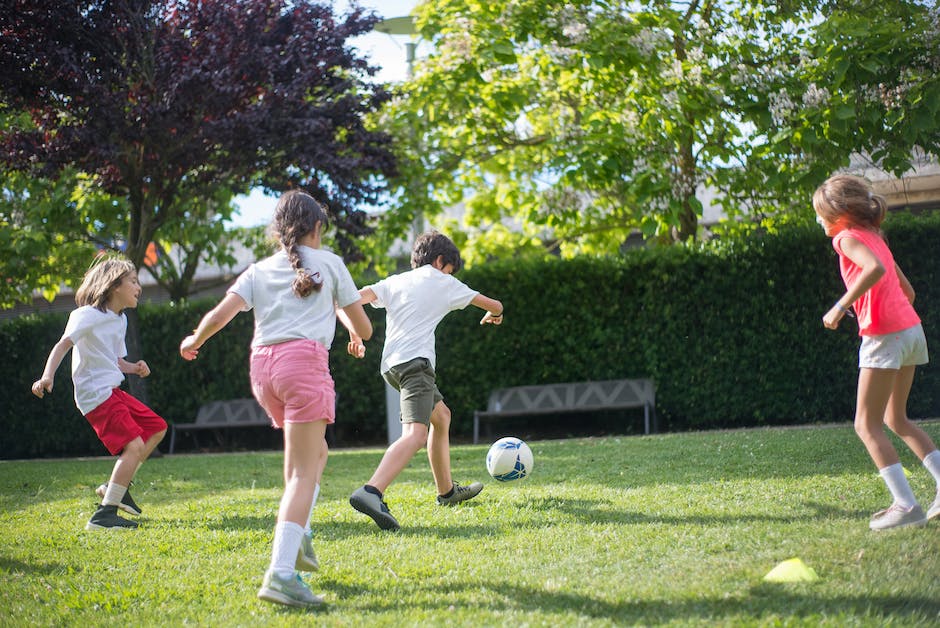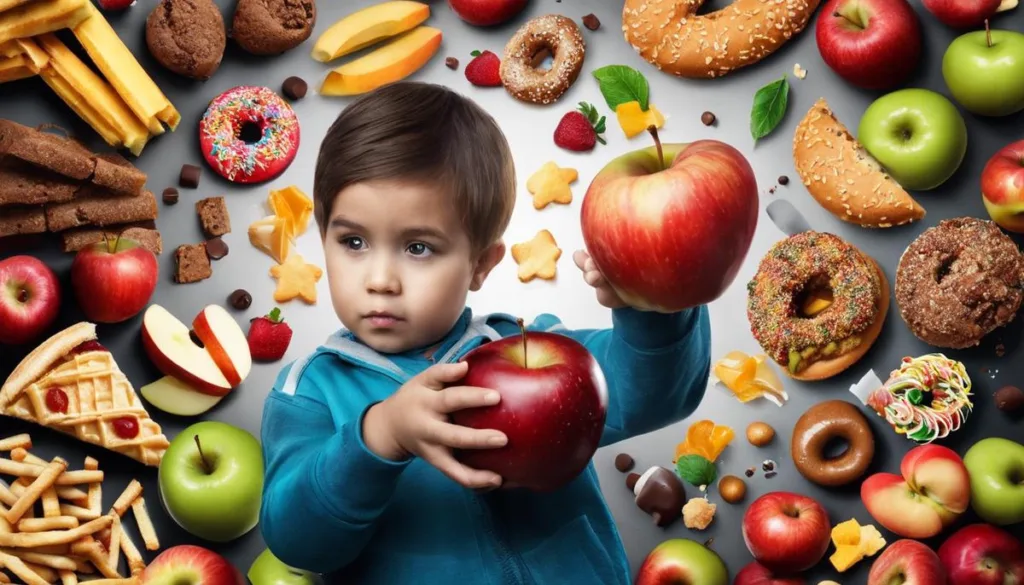Childhood obesity constitutes a significant health issue that has been rapidly escalating over the past few years, with lasting repercussions on both the physical and emotional well-being of a child. It is, therefore, integral to equip ourselves with a comprehensive understanding of what it entails, and why it is essential for parents, as powerful influencers of their children‘s habits and behaviors, to take assertive action against this growing epidemic. This discussion will delve into the roots of childhood obesity, the factors that propel it, and crucially, the role parents can play in preventing and managing this condition.
Understanding Childhood Obesity
Title: Understanding Childhood Obesity and Its Implications for Family Health
Childhood obesity, a term that is often misunderstood or underestimated, is increasingly becoming a profound concern for parents across the globe and more so in the United States. This condition is medically defined as a situation where a child’s body mass index (BMI), that is, weight over height squared, is higher than the 95th percentile for children of the same age and sex.
One might wonder, why all the fuss about childhood obesity? Well, the reasons are significant. Foremost, childhood obesity can potentially pave the way for serious health complications, both immediately and in the future. Hypertension, high cholesterol, type 2 diabetes, and sleep apnea, once thought strictly as adult diseases, are now being diagnosed in children struggling with obesity.
Furthermore, the psychological implications are equally distressing. Children living with obesity often face bullying and social isolation, leading to low self-esteem and depression. A healthy childhood, both physically and mentally, forms the bedrock for a healthy adult life. Compromising this can cast a long shadow over a child’s future.
The United States, in particular, has seen a worrying upward trend; with nearly one in six children classified as obese. What used to be an occasional concern, today represents a significant public health issue. Childhood obesity not only impacts the wellbeing of our young ones today, but it also influences the projected health of future generations to come.
Poor nutrition and lack of physical activity are common culprits contributing to this unhealthy trajectory. Busy lifestyles often make it challenging for families to prioritize healthy home-cooked meals, leading instead to a frequent reliance on fast food. Additionally, children today are spending increasing amounts of time in front of screens – whether it’s TV, computers, or mobile devices – leading to sedentary behaviors and less time spent on physical play.
Attempting to change the narrative on childhood obesity isn’t a one-parent job; it is a family affair. A shift towards healthier eating habits, encouragement of physical activity, and the fostering of positive body image at home can kickstart this change. Let’s encourage our children to embrace the joys of outdoor play, inculcate the loving craftsmanship that goes into a home-cooked meal, and teach them to love their bodies irrespective of shape or size.
Remember, children look up to the adults in their life; they are the mirrors that reflect familial behaviors and habits. Our actions, as people who love and care for them, will shape their understanding and approach to life, health, and happiness. Being mindful about instilling a culture of health, activity, and positive affirmation right from their formative years can be one of the best gifts we can offer them.

Understanding, addressing, and striving to prevent childhood obesity doesn’t mean robbing our kids of their scrumptious desserts or forcing them into stringent exercise routines. It means guiding them towards a balanced life – filled with the joys of an active body, the delight of nourishing food, and the love for one’s unique self. Here’s to raising effective warriors for a healthier future, one family at a time.
At the heart of every home is the family which plays a pivotal role in molding each child’s future. We, as moms and dads, are at the forefront of shaping our kiddos’ habits, attitudes, and perceptions of their world, particularly regarding health and well-being. Today, we’re diving deep into childhood obesity, its main contributors, and how we can combat a growing epidemic that can deeply affect our children’s futures.
Beyond the typical factors like unhealthy eating and lack of physical activity, there’s a multitude of causes contributing to childhood obesity. Comprehending these is a vital step towards encouraging and promoting a healthier lifestyle for our little ones.
Firstly, environmental elements significantly affect a child’s weight. In certain neighborhoods, fresh fruit and vegetables might be difficult to find, or they may simply be out of some families’ price range, leading to consumption of cheaper, more processed options. Convenient yet unhealthy fast foods are generally the more accessible alternatives. Children’s environments, whether home, school, or the community, should be conducive to nutritious food options and promote physical activity.
Besides environmental aspects, genetic factors also play a substantial role. While a child’s genes don’t dictate their destiny, kids with obese parents are more prone to obesity themselves. This might be due to shared behaviors within a household, such as unhealthy eating habits or lack of exercises, but could also be partly due to genetics.
Societal pressure can also influence childhood obesity. The constant advertising of unhealthy food options can affect children’s food choices. These ads create tempting desires for high sugar, high-fat foods, making it harder to encourage a well-balanced diet at home.
Lifestyle patterns can similarly contribute to the obesity issue. Our fast-paced lives often rely heavily on quick meals and technology use — which can mean more sedentary time for our children. Daily routines and habits significantly influence a child’s lifestyle and therefore their weight.
Finally, psychological factors need consideration. Food can often be used as a comfort object during times of stress or emotional upheaval. Encouraging healthy coping mechanisms rather than resorting to comfort eating is critical.
Healthy living should be a priority infused into the fabric of our homes. By understanding these contributors to childhood obesity, we’re a step closer to being successful nurturers of our children’s health and well-being.
Let’s make concerted efforts to cultivate and foster healthy habits in our family’s routine. Whether it’s physical activity, well-balanced meals, or addressing emotional health – remember, it’s never too early to start or too late to tweak the wellness journey. Keep the dialogue open, adapt, learn, and grow together as a family to ensure a future of health and happiness for our precious ones.
Acknowledging the problem is the first step, understanding it is the next. Together, let’s pave the way for a fitter, healthier future for our children.

Parent’s Influence on a Child’s Eating Habits
Parents Play a Pivotal Role in Shaping Their Children’s Relationship with Food
In the mission to foster health-centered homes, parents indeed have a starring role. They are the direct influencers of the young minds at home. Their contributions play a crucial role in shaping a child’s relationship with food, much more than they might realize.
Encouraging a balanced diet and promoting regular physical activity are cornerstones of a healthy lifestyle. Still, the journey toward shaping children’s relationship with food goes far beyond just promoting good eating habits and an active life. It’s also related to instilling children with a healthy attitude towards food and showing them its role in maintaining overall well-being.
All relationships form through experience, and this is no different when it comes to children and their bond with food. Daily family meals, for instance, provide opportunities to introduce a variety of flavors, textures, and food types. Eating together as a family also represents an ideal time to model good table manners and demonstrate the significance and joy of sharing meals.
Even the simplest act of cooking together can shape their view positively. It is not only an effective way of teaching valuable life skills but also sneaks in some unexpected lessons about math, science, and even languages. Besides, it invokes a sense of responsibility, instills better eating habits, and encourages adventurous eating.
Remember, food should never be used as a tool for bribing, punishment, or showing love. Instead, parents should focus on associating food consumption with feelings of nourishment and gratification.
Children often mirror their parents – seeing them enjoy their meals can support their willingness to try new foods and to view mealtime positively. Therefore, a parent enthusiastically savoring their broccoli might greatly assist their young one to do likewise!
Lastly, maintaining open communication about food and its nutritional aspects encourages children to make informed choices. Educating kids about where food comes from, how it helps our body, why we need to eat diverse food, can indeed encourage a more balanced perspective towards eating.
While parents do not control the genetics and environmental factors impacting a child’s weight, they can significantly influence their behaviors, perceptions, and attitudes about food. No effort is too small in this endeavor – from planning meals, setting routines, to the way food is discussed, every step matters.
In conclusion, remember that establishing a healthy relationship with food in your child’s world is a journey, not an overnight process. It requires patience, consistency, and most importantly, an abundance of love and understanding. However, the payoff is undeniable – nurturing kids who grow into adults that appreciate and respect food and understand its role in health and happiness.
Remember, as parents, we are not just raising kids, but we are also raising the future adults of our society. The values they imbibe today will influence not just their future but the future of our society as a whole.

Promoting Physical Activity at Home
Title: Fostering Active Lifestyles in Children: A Parent’s Role
As the mirror that children look to for cues on how to navigate life, parents play a critical role in shaping a child’s relationship with exercise and physical activity. Combined with a balanced diet, an active lifestyle forms the bedrock of a child’s physical and mental well-being. This indispensable role of parents can’t be overemphasized.
One may wonder, “How can parents encourage children to embrace an active lifestyle?” Truth is, there isn’t a one-size-fits-all answer to this question. It requires an amalgam of strategies, patience, and, yes, some creativity as well!
Now, lets open the treasure chest of ideas that can help parents encourage an active lifestyle in their children:
Outdoor fun is a brilliant starting point. Nature walks, picnics, gardening, or cycling in the park; these activities not only foster physical activity but also provide opportunities for family bonding. Such activities bring lessons on the richness of outdoor life and the joys of physical exertion –adding to the fun quotient.
Physical activities shouldn’t be just about structured sports. It’s about getting those little limbs moving, heart pumping, and most importantly, them enjoying! Dance-offs, freeze tag, balloon volleyball, hula hoop contests, hide and seek, are all fun ways to get the adrenaline rushing.
While making efforts to introduce regular physical activity, remember to make it playful rather than obligatory. Reinforce the idea that movement brings joy and is not just a chore that needs to be ticked off the to-do-list. Children are more likely to continue an activity they find enjoyable and fun.
Regular family exercise time can help set a routine. Be it yoga, aerobics, swimming, or a quick pre-dinner walk in the neighborhood. Practicing physical fitness together as a family paints a strong visual narrative for children, instilling the importance of an active lifestyle.
Don’t discount the influence of friendly competition! Be it a family badminton tournament or a good old game of tag, competition can be a great motivator. Also, it could provide an excellent opportunity to impart valuable lessons in sportsmanship.
Steer children towards trying a different sport or physical activity every few months. This variety not only exposes them to different skills and challenges but can also keep their interest alive. From kayaking to karate, let them explore and discover what they love.
Parents need to manage their expectations effectively. It’s important not to pressure children into excelling at a sport or a physical activity. Instead, the focus should be on the learning process, the effort invested, and the fun had along the way.
Finally, parents’ commitment to their own physical well-being can greatly influence their children’s attitudes towards an active lifestyle. When children see parents prioritizing exercise, they are inclined to do the same.
Remember, cultivating an active lifestyle isn’t about creating mini-Olympians but raising children who view physical activity as an integral, enjoyable part of life. In the end, the goal is to nurture children into adults who choose health, recognize the value of an active life, and spread that ethos to the generations to come. Our healthy influence today can shape a healthier society tomorrow.

Efficient Communication and Emotional Support
Where does a parent’s role begin in the fight against childhood obesity? It starts with planting the seed of effective communication and emotional support. Believe it or not, these two factors play a significant role in ensuring your child grows into a healthy, well-rounded adult. Childhood obesity is not merely a health concern that can be curbed with diet and exercise – it is a matter that concerns the child’s mental, emotional, and social wellness, which parents have a substantial influence over.
Open dialogues lie at the heart of preventing and tackling childhood obesity. When parents speak openly with their children about food, nutrition, and health, they provide the child with a background to making wise choices by themselves. Children are keen observers and quick learners – they pick up our attitudes, emotions, and behaviors surrounding food. Make sure you discuss the nutritional value of food items rather than labeling them as ‘good’ or ‘bad’. This guards against developing disordered eating habits or forming negative associations with certain foods.
Emotional support is integral to shaping a child’s relationship with food and exercise. When a child is met with encouragement and reinforcement, enjoying a nutritious diet and getting regular exercise don’t seem like tedious obligations, but rather positive habits that make them feel good and healthy. Compliment your children for trying new, wholesome food, engaging in physical activities, and making efforts towards a healthier lifestyle. Their confidence will grow, as will their willingness to make healthful choices.
As part of emotional support, it’s crucial to foster a positive self-image within the child. Children, who love and respect themselves, are far more likely to make choices that prioritize their health and happiness. Avoid criticizing your child’s body shape or weight. Instead, talk about having strength, energy, and a healthy body.
Moreover, parents ought to lead by example. Demonstrating balance, moderation, and joy in food and exercise can significantly benefit your child’s attitudes towards their health. Show excitement towards a new sport or when trying a nutritious, vibrant meal as first-hand experiences will shape their understanding and perspective.
Driving the point home, it’s essential to remember that children are not small adults. Their physical and emotional needs differ vastly, hence, their dietary and exercise routines should be age-appropriate. For example, physical activity can often be structured as fun, playful games for younger children. As they grow older, you can introduce them to different sports activities, keeping their interests at the forefront.
Turning to technology, rather than vilifying it, why not use it as a tool? There are numerous children-friendly apps that can make physical activity and healthy eating exciting and enjoyable. From dance videos to cooking healthy recipes, technology can be more of an ally than an enemy.
Additionally, create an environment conducive to health and wellness at home. This includes having fruits, vegetables, whole grains, and lean proteins readily available. It also means encouraging physical activity, which can be as simple as regular family walks, a softball game in the backyard, or a weekly bike ride.
Remember, the best gift you can give your child is not just life but a quality of life. As parents, you’d want your kids not just to live but to thrive, and this is why preventing childhood obesity is crucial. It’s about building a foundation for a healthy, vibrant, and fulfilling adulthood. As parents, you possess the power to instill practices and values that promote health, happiness, and a positive relationship with food and one’s body – a legacy that perhaps, will get passed on to future generations!

Through being mindful influencers of their children’s eating habits, promoting physical activity and providing emotional support, parents possess the capacity to help shape their children’s health and well-being significantly. Armed with the understanding of the causes of childhood obesity, they can efficiently implement preventive measures in the home environment. Ultimately, parents have the opportunity to shape their child’s perspective towards food and exercise, fostering a healthier and happier future for the next generation.
Writio: An intelligent content writer for website publishers and blogs. This article was written by Writio.
Thank you for reading this post, don't forget to subscribe to our free newsletter
!